Results 9,221 to 9,230 of 10762
LinkBacks (?)
-
12-26-2016, 11:32 AM
-
09-02-2016, 05:39 PM
-
whole garden made with pallets!! Love it!! | Pallets | Pinterest | Pallets, Pallets Garden and Wooden Pallets
Refback This thread03-06-2016, 11:30 AM -
10-20-2015, 05:29 PM
-
06-12-2015, 08:00 PM
-
02-26-2015, 01:58 PM
-
01-05-2015, 04:13 PM
-
12-19-2014, 10:19 AM
-
EMERGENCY: HUGE FEMA PANDEMIC EXERCISE IN USA IN NOVEMBER, INTERNET SHUT DOWN PART OF EXERCISE | Prepare4Survival
Refback This thread12-03-2014, 10:39 PM -
Off Grid World ? Ugly Duckling Shipping Container Home Built by Artist Is a Beautiful Swan on the Inside
Refback This thread11-25-2014, 03:10 PM -
11-17-2014, 10:59 PM
-
11-13-2014, 11:18 AM
-
11-09-2014, 02:54 PM
-
10-28-2014, 11:38 PM
-
10-26-2014, 05:54 AM
-
10-16-2014, 11:28 AM
-
10-03-2014, 01:25 PM
-
10-02-2014, 09:16 PM
-
09-26-2014, 07:00 PM
-
09-26-2014, 01:56 PM
-
09-19-2014, 04:46 PM
-
09-13-2014, 05:49 AM
-
09-05-2014, 01:52 PM
-
09-01-2014, 09:39 AM
-
08-30-2014, 06:29 PM
-
08-10-2014, 06:29 AM
-
08-04-2014, 05:07 PM
-
07-23-2014, 11:14 AM
-
New Evidence on Expiration Dates | Medical Preparedness | Doom and Bloom (TM) | Doom and Bloom (TM)
Refback This thread07-22-2014, 10:10 AM -
07-18-2014, 08:37 PM
-
07-15-2014, 04:57 PM
-
07-11-2014, 01:40 AM
-
04-22-2014, 11:14 AM
-
04-18-2014, 12:57 PM
-
04-18-2014, 10:10 AM
-
04-14-2014, 12:18 AM
-
04-12-2014, 02:28 AM
-
03-02-2014, 11:43 PM
-
12-24-2013, 11:59 PM
-
12-07-2013, 11:04 PM
-
kitchen | Cob
Refback This thread11-25-2013, 03:24 PM -
10-22-2013, 10:25 PM
-
Apple Pie Braid | Sweets
Refback This thread09-26-2013, 07:58 AM -
09-02-2013, 04:44 PM
-
5 Reasons Why You May have to Bug Out Even Though You Don’t Want to | The Apartment Prepper's Blog
Refback This thread08-23-2013, 03:20 PM -
06-27-2013, 06:30 AM
-
06-23-2013, 08:11 PM
-
06-17-2013, 11:21 PM
-
05-24-2013, 05:06 PM
-
To Eat / BASIC LIST / SUGGESTED ITEMS FOR LONG TERM SURVIVAL - Page 275 - ALIPAC
Refback This thread05-01-2013, 03:49 AM
Thread Information
Users Browsing this Thread
There are currently 1 users browsing this thread. (0 members and 1 guests)
-
09-09-2024, 04:21 PM #9221
Traditional Cooking for the Modern Pioneer
Bone Broth • Ferments • Sourdough • and More!HOME NATURAL REMEDIES
How to Make a Natural Antibiotic Ointment
MARY BRYANT SHRADER
Posted July 29, 2023
Learn how to make this natural antibiotic ointment to soothe bug bites, minor cuts, and more! You can easily make this ointment with only five ingredients, and it can be ready in minutes.
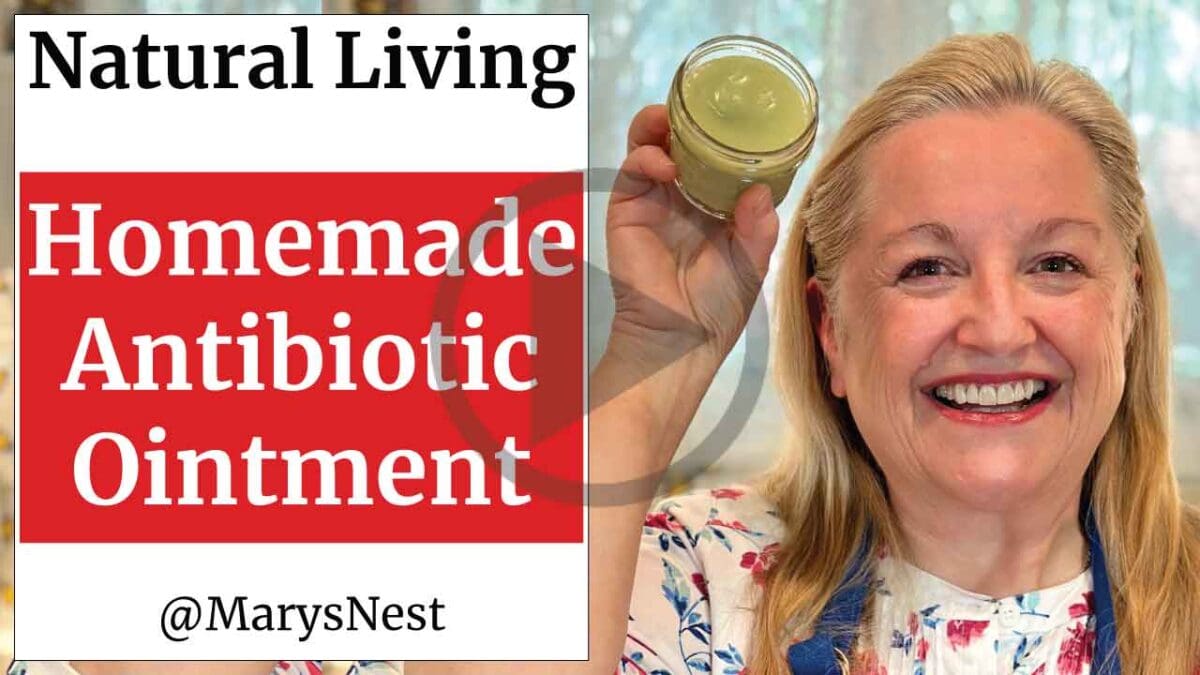
Watch the Natural Antibiotic Ointment Herbal Salve video
Affiliates note: As an Amazon Associate I earn from qualifying purchases. My content may contain affiliate links to products and services. If you click through and make a purchase, I’ll receive a small commission. It does not affect the price you pay.
Table of Contents
- What is a Natural Antibiotic Ointment?
- Disclaimer
- Ingredients for Making a Natural Antibiotic Ointment
+ VIEW MORE
What is a Natural Antibiotic Ointment?
A natural antibiotic ointment is a soothing herbal balm or herbal salve that you apply externally. The ingredients in the ointment work to combat harmful microbes that can otherwise lead to infection.
For the natural antibiotic ointment you’re making with this recipe, the coconut oil serves as a broad spectrum anti-microbial along with the essential oils helichrysum and German chamomile.
The helichrysum essential oil and the other ingredients in this healing ointment also offer a whole host of benefits to help with skin inflammation, including these properties:
- Analgesic (pain relief)
- Anti-bacterial
- Anti-inflammatory
- Antiseptic
- Scar diminishing
- Skin regeneration
Read more about the benefits of the ointment’s ingredients in these research papers:
Subscribe to Mary's Nest!
Subscribe to my free newsletter and receive a copy of my free 36-page Pantry List and bonus eBooks too!
I consent to receiving emails and personalized ads.
- Helichrysum italicum: From Extraction, Distillation, and Encapsulation Techniques to Beneficial Health Effects
- A Comprehensive Study of Therapeutic Applications of Chamomile
Disclaimer
I am not a doctor or medical professional. If you are not feeling well, please seek professional medical attention and medicine. And if you are thinking of supplementing your treatment with home remedies, be sure to talk to your medical professional about them. It’s important that you get the medicine and treatments you need to get back to good health.
Ingredients for Making a Natural Antibiotic Ointment
Find the full printable recipe with measurements below.
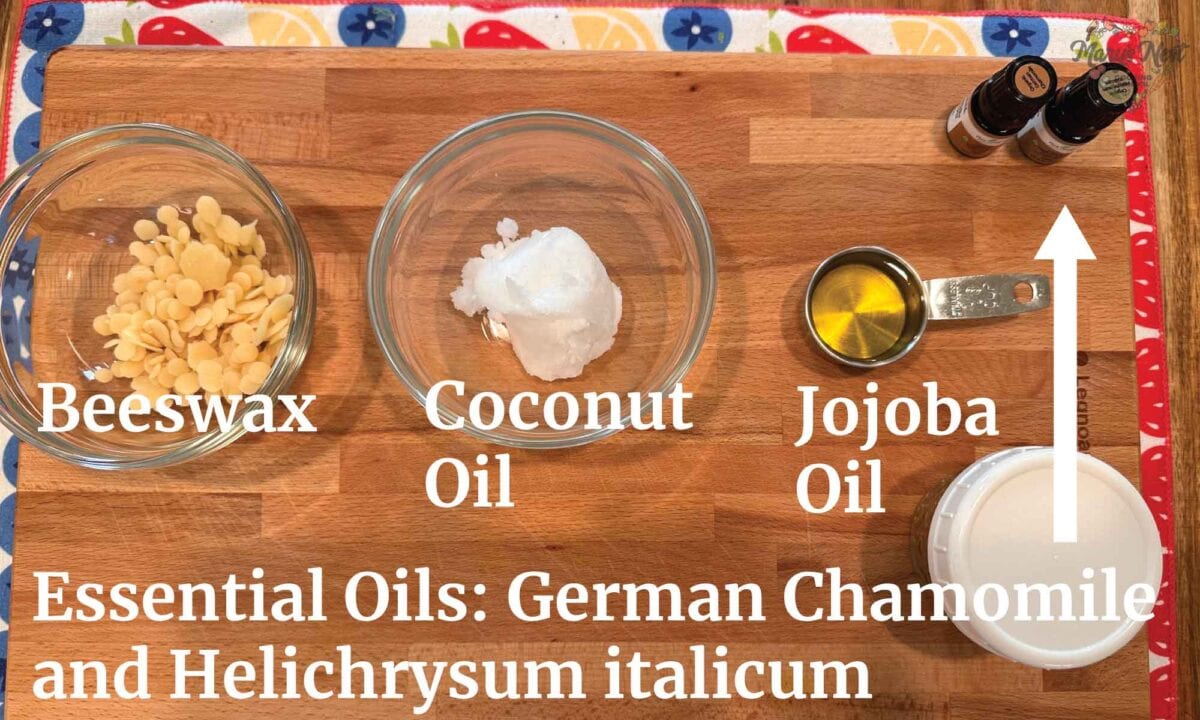
You only need 5 ingredients needed to make this natural antibiotic ointment:
- Beeswax – Provides soothing properties and makes for a smooth spreadable ointment.
- Coconut oil – Introduces a strong anti-microbial.
- Jojoba Oil – Helps to reduce scaring and acts as a natural preservative.
- German “Blue” Chamomile Essential Oil – Includes anti-microbial, anti-bacterial, anti-inflammatory, and analgesic properties.
- Helichrysum (italicum) Essential Oil – Includes anti-microbial, anti-inflammatory, antiseptic, and analgesic properties and helps diminish scarring and increase skin regeneration.
Get links to ingredients and supplies to make this antibiotic ointment.
How to Make a Natural Antibiotic Ointment
Find the full printable recipe with instructions below.
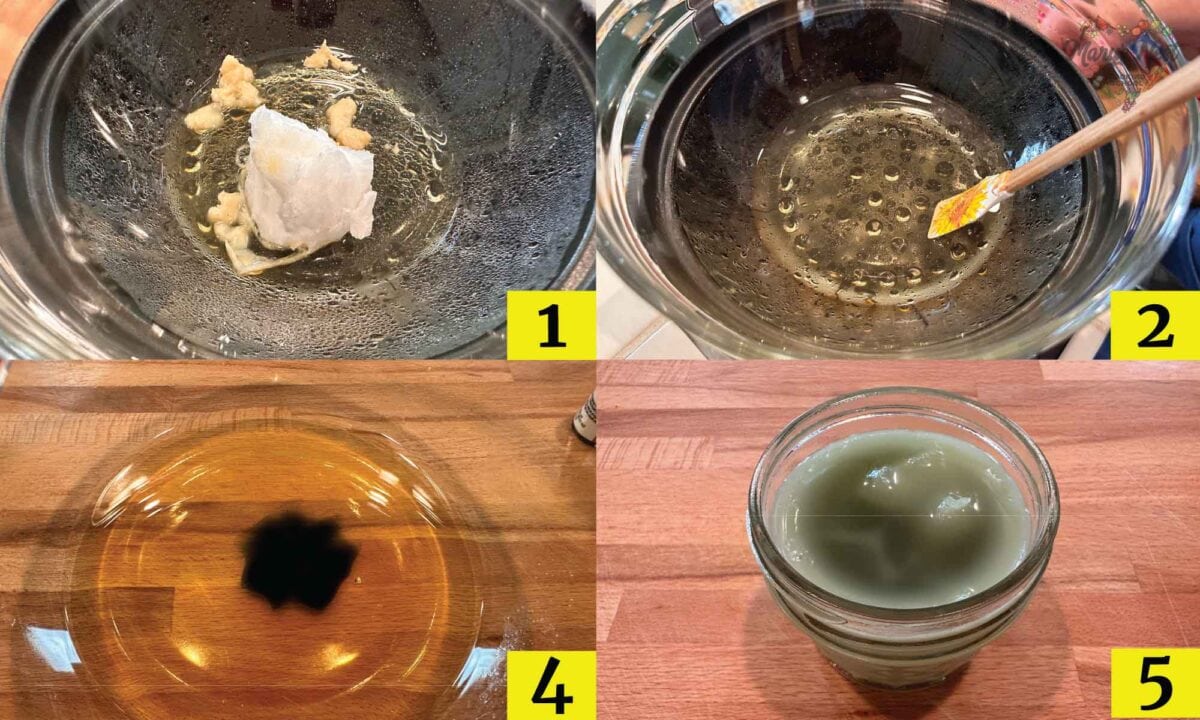
Making a natural antibiotic ointment is easy, and it can be ready in minutes.
- Place beeswax and coconut oil in a double boiler and melt over a very low heat.
- Turn off the heat, add in the jojoba oil, and stir well.
- Move the top of the double boiler (or bowl) to a heatproof surface. Allow to cool to a warm but no longer hot temperature. (Not shown in image above)
- Once warm, add in the essential oils, and whisk well to incorporate.
- Transfer to a glass jar with a lid to store.
Variations
Although jojoba oil is my first choice to use when making this antibiotic ointment, if you do not have any on hand, you can substitute this ingredient with extra-virgin olive oil.
Preparation Tips
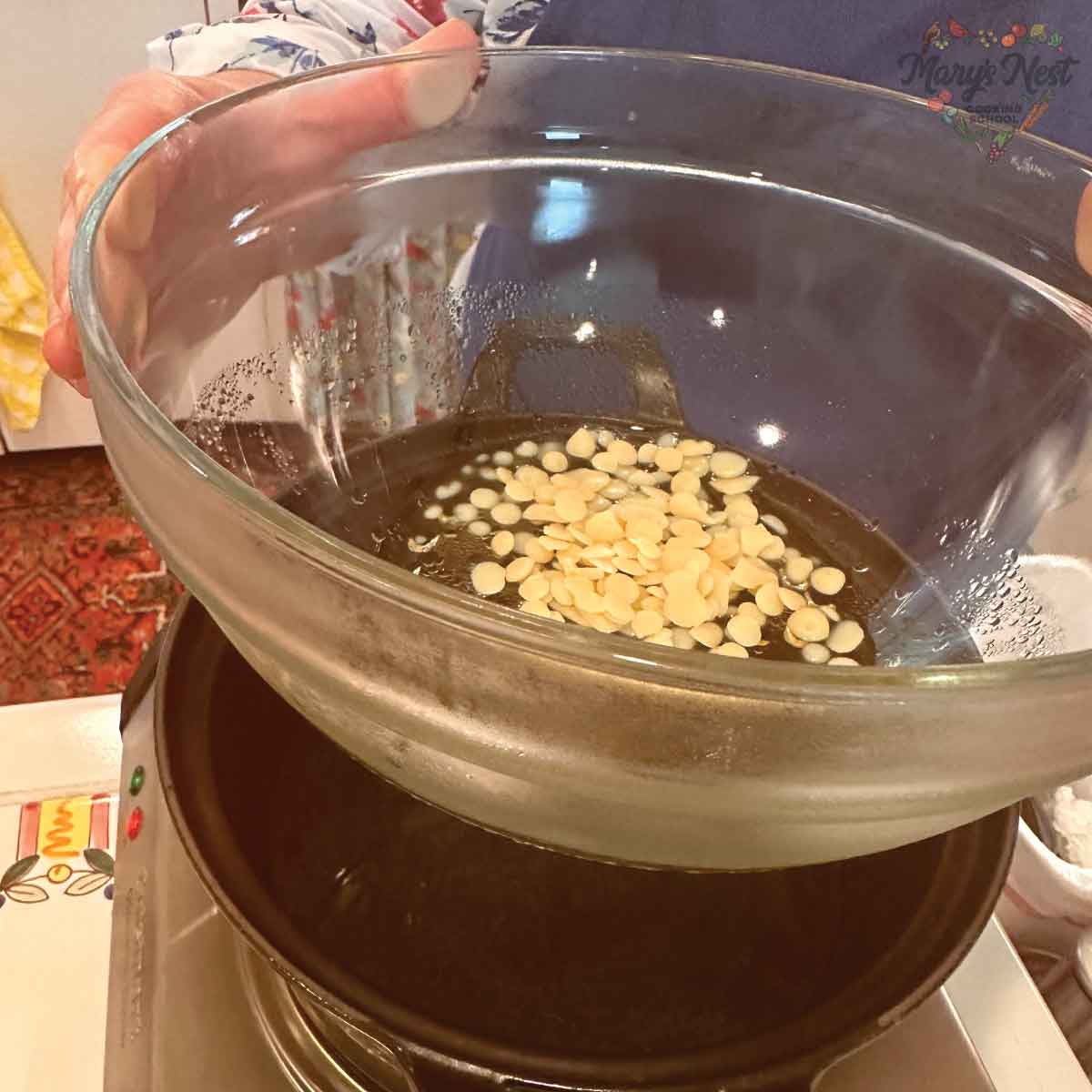
This antibiotic ointment is best made in a double-boiler or similar setup. However, if you do not have the equipment needed to prepare this recipe in a double boiler, you can also use a small saucepan.
Be sure to watch the beeswax pellets and coconut oil carefully as they are melting, as you do not want to allow the mixture to boil at any time.
How to Store a Natural Antibiotic Ointment
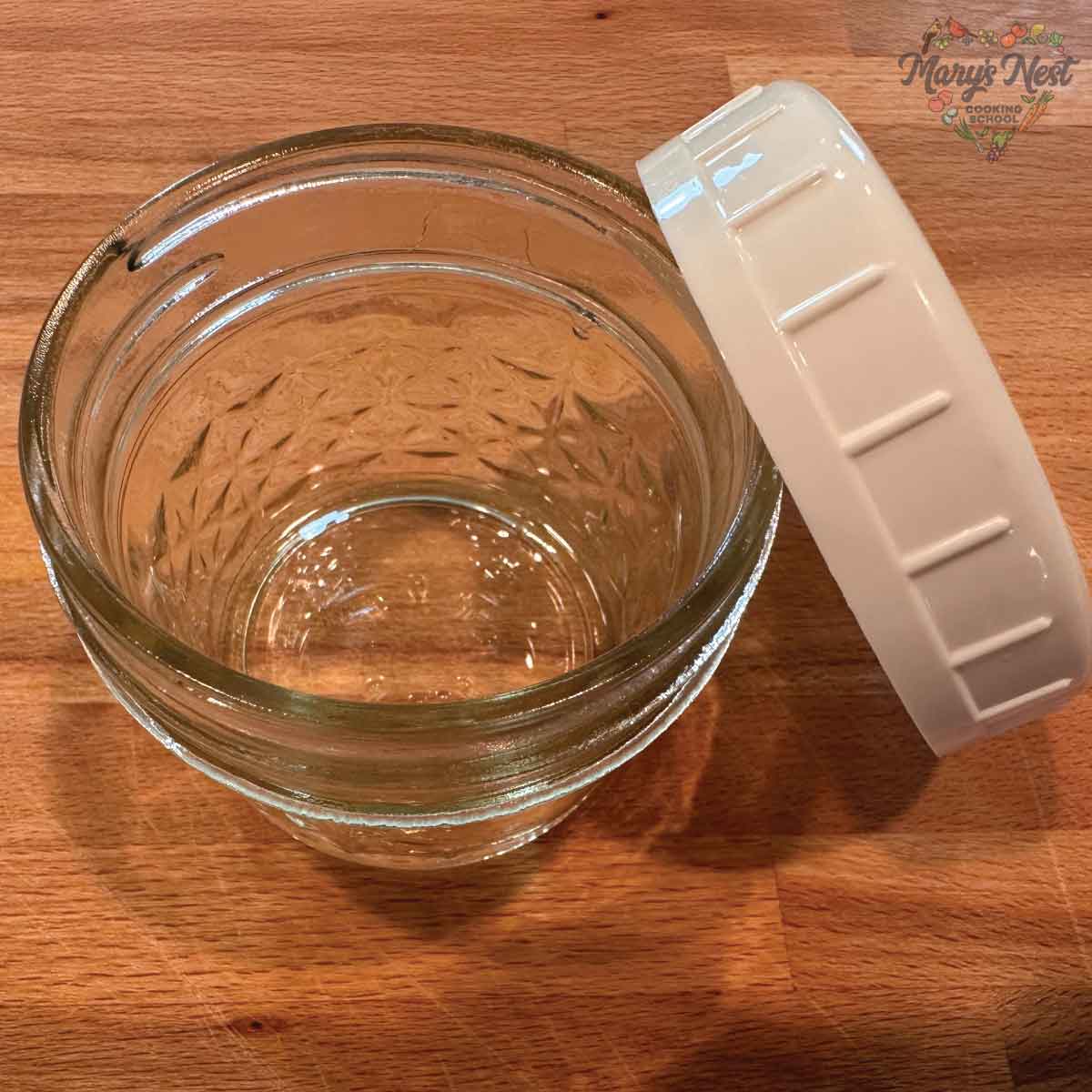
This Natural Antibiotic Ointment is best stored in a glass jar with a tight lid in a cool dark place. A kitchen pantry is perfect, or wherever you have set up your Herbal Medicine Cabinet within your Healing Pantry.
How to Use a Natural Antibiotic Ointment
You can apply this Natural Antibiotic Ointment to bug bites, minor cuts, scrapes, or abrasions, but first, be sure to wash the affected area well with warm soapy water, rinse well, and allow the skin to air dry. Once the skin is dry, gently apply the ointment.
Continue to apply the ointment for the first few days as the skin heals. If a scar remains once the skin has healed, continue to apply the ointment daily, rubbing it in well to help diminish the scar.
You can also apply this ointment to an old scar to help diminish it, as well as apply it to help soothe dry, cracked skin, such as on heels and elbows, and jagged and inflamed cuticles.
Master Recipes for Natural Remedies
Master recipes show you how to create a recipe but give you the flexibility to switch out the ingredients. Try the following master recipes and customize them to create the natural remedy that will help your needs.
- Medicinal Herbal Poultice using Fresh Herbs or Dried Herbs
- Medicinal Herbal Oils and Herbal Salves
- Medicinal Herbal Tinctures Using Any Herb
How to Make a Natural Antibiotic Ointment - Mary's Nest (marysnest.com)
If you're gonna fight, fight like you're the third monkey on the ramp to Noah's Ark... and brother its starting to rain. Join our efforts to Secure America's Borders and End Illegal Immigration by Joining ALIPAC's E-Mail Alerts network (CLICK HERE)
-
09-09-2024, 04:27 PM #9222
How to Make the Most Powerful Natural Antibiotic At Home
Monday, September 9, 2024 10:00
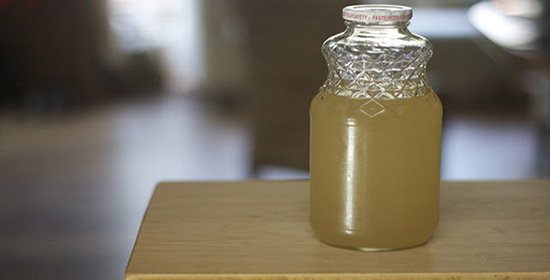
by Claude Nelson
Herbal tinctures are typically an alcoholic extract of plant or animal material. One of the best solvents you can find in any home is VINEGAR. Being acidic is a better solvent for obtaining alkaloids then most of industrial products.
The general method of preparation (herbal tinctures) is really simple: the herbs are put in a container (a jar), the vinegar is added and then the jar is left to stand for 2–3 weeks and shaken occasionally in order to maximize extraction.
Here is an amazing antibiotic, antiviral, vermifuge, anti-fungal (and a lot of other health benefits as listed below):
You’ll need:
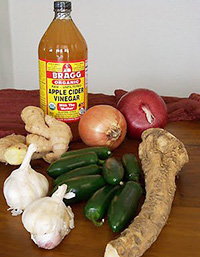
1. Apple Cider Vinegar contains Malic Acid which is an antifungal, antibacterial, antiviral, and also supports energy production which increases mental and muscle functioning. It strengthens the immune system and regulates the acid/alkaline balance.
It also aids the digestive tract- if the apple cider is organic and unfiltered it will contain small amounts of ‘mother’ colony (bacteria and yeast) which is an amazing probiotic. More so, it is known to reduce cholesterol and blood glucose levels.
2. Fresh Hot Peppers contain capsaicin (The hotter the chili, the more capsaicin) a substance known for keeping immature fat cells from developing into full-fledged ones (Burns off FAT cells) and for boosting metabolism. It also contains Vitamin C (helps the immune system) and a wide range of B Vitamins. A study in the British Journal of Nutrition showed that adding hot chilis to daily meals protects against cholesterol (forming) in the blood.
3. Garlic contains allicin, an antibiotic and anti-fungal compound that protects it against pests. Allicin helps treating sore throats, colds, flu, poor digestion and it is a potent antiseptic and antimicrobial agent effective against many types of infection. Above all, it really helps your immune system and you won’t be caching colds that easy.
4. White Onions contains Quercetin (just like Allicin for Garlic), a substance known for its health benefits. Quercetin is an effective anti-inflammatory agent (study in the journal International Archives of Allergy and Applied Immunology). Quercetin has been found to relax the airway muscles and may provide a relief when caching a cold (or for asthma symptoms). It also acts as an antioxidant, protecting the body against free radicals and boosting your immune system.
5. Ginger has a long tradition of being very effective in alleviating symptoms of gastrointestinal distress. In herbal medicine, ginger is regarded as an excellent carminative (a substance which promotes the elimination of intestinal gas) and intestinal spasmolytic (a substance which relaxes and soothes the intestinal tract). Modern scientific research has revealed that ginger possesses numerous therapeutic properties including antioxidant effects, an ability to inhibit the formation of inflammatory compounds, and direct anti-inflammatory effects.
6. “Horseradish Root juice or sauce (extracted from horseradish root) has been used effectively to relieve sinus discomfort. The traditional treatment for sinusitis is to “take a half teaspoonful of grated horseradish sauce without dilution both morning and afternoon. Do not drink anything or eat for at least ten minutes after the dose. There will be a powerful feeling in the head, followed by a sensation of the sinuses clearing, sometimes accompanied with sweating and perhaps tearing.
Due to its antibiotic properties, horseradish can also be used to treat urinary tract infections (UTI) and destroy bacteria in the throat that can cause bronchitis, coughs and related problems. Additionally, horseradish stimulates the body to eliminate urine, so bacteria or other inflammatory agents in the bladder may be flushed out sooner than they normally would be eliminated.” (Source)
How to Extract the Tincture
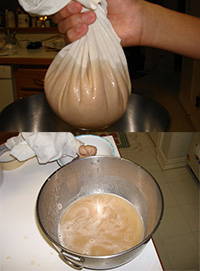 1. Peel and chop the Onions and the Garlic.
1. Peel and chop the Onions and the Garlic.
2. Grate the Ginger and the Horseradish Root
3. Toss the Onions, the Peppers and the Garlic into the blender or processor and wreak havoc!
4. Add all crumbled ingredients into one gallon jar and pour raw Apple Cider Vinegar until it’s fully filled.
5. Shake it every day for at least 2 weeks. The longer it stays in the jar the stronger the substance will be.
6. After at least 2 weeks, strain the substance. You can use a press or simply a gauze cloth.
7. Store the substance in small bottles in a dark place
You can start drinking it daily (two times a day). Mix it with honey if you find it to strong.
Medicines aren’t cheap at all, and they’re not getting any cheaper. In fact, prices have only gone up. Think about how much you spent last time you visited a pharmacy with a health issue!
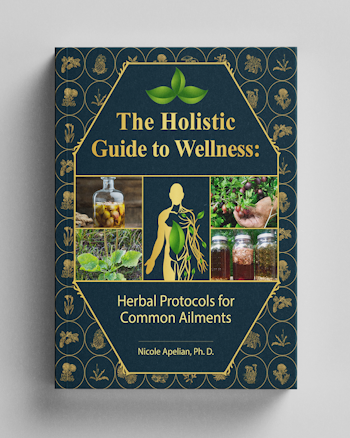
And that is just for alleviating the symptoms, not curing the health problem. By contrast, a natural approach often costs next to nothing.
I want this book to empower regular people to take their health into their own hands and save some of that money, effort, and pain… at an affordable price.
How to Make the Most Powerful Natural Antibiotic At Home | Health | Before It's News (beforeitsnews.com)If you're gonna fight, fight like you're the third monkey on the ramp to Noah's Ark... and brother its starting to rain. Join our efforts to Secure America's Borders and End Illegal Immigration by Joining ALIPAC's E-Mail Alerts network (CLICK HERE)
-
09-10-2024, 03:43 AM #9223

Native-American Food Preservation Techniques
by Fergus Mason
August 29, 2024

When Europeans first arrived in North America they often struggled to survive in the unfamiliar wilderness they encountered. For many early colonists, the help of the Native American peoples was a godsend. Because they were familiar with the plants, animals and climate of America, the natives had an amazing ability to find the food they needed, often without farming at all. The new arrivals learned some of those skills, and were able to keep themselves fed.
Of course the colonists quickly established farms, built towns and recreated the sophisticated European societies they’d come from. Quite soon, most of them were buying food as they needed it from markets, butchers and bakers. Agriculture and early food processing – by the 17th century beef and pork were being salted on an industrial scale, for example – meant food was available all year round.
The Native Americans lived a very different lifestyle. Most of them were nomadic or lived in small settlements. They usually lived off the land, as hunter-gatherers – and that meant sometimes they had more food than they could eat, while other times they struggled to find any at all.
To survive they had to find ways to preserve the surplus so it was available in the lean times. They did find ways to do that, and those methods can still be valuable to preppers today. Here are some of the main ways Native Americans prepared food for storage.
Drying
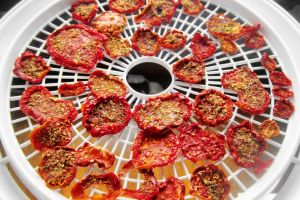
Almost all foods have a very high water content. Most fruit and vegetables are around 90% water by weight, and some of them are above 95%. Meat contains less moisture, but even then it’s usually somewhere between 70% and 75% water.
Related: How to Build a Solar Dehydrator
Generally this is fine; we need water to survive, and usually we get a lot of it from our food. It’s a different story if you’re trying to preserve food, though. We’re not the only ones that need water to survive; the bacteria and other organisms that make food spoil need it, too. More importantly, they don’t just need it to survive – they need it to reproduce. If you can remove most of the water you can slow their reproduction dramatically. Food that would spoil in a couple of days can last for months – or even years – if you can remove enough of the water.
Native Americans loved dried food. Not only could it be safely stored for much longer, but with the water removed it was a lot lighter. Many Native Americans were semi-nomadic, either following the game they hunted or moving between summer and winter areas. Dried food was more compact and, importantly, nowhere near as heavy; that meant they could carry much more of it.
Many preppers already know the benefits of drying food. I have a dehydrator in my kitchen, and as well as making jerky I use it to turn fruit into trail snacks, dry surplus herbs and dehydrate vegetables to add to home-made MREs.
Native Americans obviously didn’t have access to electric dehydrators, though, so instead they used the energy of the sun. Many tribes made drying racks from branches, and hung thin strips of meat or other food over them so the sun and air could evaporate their water content. Children and old people watched over the food as it dried, driving off insects and scavengers. If you’re drying food on a rack yourself a less manpower-intensive solution is to cover the rack with a mosquito net.
Another way to dry food is to lay it in the sun on flat stones. The stones can be heated in a fire first to speed up the process, but if they get too hot the food can end up cooked rather than dried.
Smoking
 Smoking has many of the benefits of drying; it reduces the water content of food, slowing down the spoiling process. It can also coat or impregnate it with substances from the smoke that help to preserve it even better.
Smoking has many of the benefits of drying; it reduces the water content of food, slowing down the spoiling process. It can also coat or impregnate it with substances from the smoke that help to preserve it even better.
As a bonus, smoking also adds a distinctive flavor.
Native Americans smoked meat and fish, turning them into compact but tasty and nutritious foods that would last for months. They did this by building wooden racks, laying the food on them then leaving it in the smoke from wood fires for days.
Nomadic tribes had special tipis that were only used as smokehouses; tribes that built permanent villages used a hut or an underground room instead. If you don’t have a smokehouse, you can learn here how to build a cheap smokehouse in your backyard. The woods used were often selected for the flavor they gave the food, with hickory being a favorite.
When Native Americans butchered an animal, lean meat was usually dried. Ribs and fattier cuts were good candidates for smoking.
Rendering
Drying and smoking work best with lean meat; both processes will remove the moisture from meat, preventing spoiling, but the oils in fat can still turn rancid over time. If you make jerky you know how important it is to use the leanest meat possible, and the Native Americans knew this too.
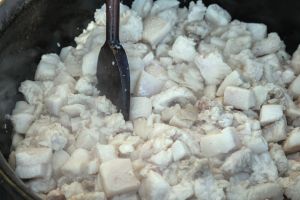
They didn’t want to waste the fat, though; it’s also a valuable source of energy and nutrients. When they butchered an animal, Native Americans would cook the fatty parts on a hot stone or in a pan to render the fat out, making it easier to store.
Related: How to Make Long-Lasting Tallow for Survival
The most famous of their survival foods, pemmican, was made from rendered fat, pulverized dried meat and dried berries; it was high in protein and energy, and would last right through a long winter. Rendered fat was also used for cooking and medicinal poultices.
Salting
Salt is a very effective natural preservative, and Native Americans who lived near the coast were well aware of its value as a food preservative.
They collected salt by letting seawater evaporate in shallow ponds, then gathering and drying the salt it left behind.
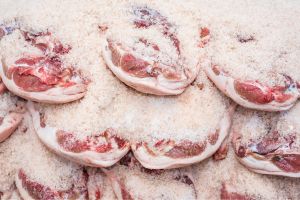
The Chickasaw people, who originally lived in the southeastern US, preserved meat by salting it – their name for it was Nipi hapayimma. Meat could be salted by cutting it in strips then rubbing the surface with salt as it dried.
Alternatively it could be soaked in strong brine for around a month.
With the brine method herbs and spices were sometimes added to the solution to give the meat more flavor.
Freezing
Like salting, freezing wasn’t a method all Native Americans could use – but those who could, did.
In winter, hunters would butcher the animals they killed then take the meat they didn’t plan to eat right away and bury it in snowdrifts. Once it had frozen, it would be removed from the snow. If the tribe was moving, the frozen meat could be wrapped in a hide and the cold air would keep it frozen until it was needed.
If they were settling in for the winter it could be stored in a pit or root cellar to protect it from animals.
Burial
Even today we preserve some foods by burying them. Potatoes are often stored in “clamps”; lay some straw on the ground, pile the potatoes (or other root vegetables) on it, cover them with more straw, then pile earth over the whole thing and dig a drainage ditch around it.
Native Americans also buried food for storage. Some tribes ate potatoes – these spread through the Americas before Europeans arrived – and most ate corn, squash and other vegetables.
All of these could be preserved for weeks, sometimes longer, by burying them in a pit lined with dry grass. Earth makes a great insulator, protecting buried food from the heat.
The modern world has many ways of preserving food. Any grocery store will sell us a wide range of dehydrated, canned and frozen food, and these are great options for building up your stockpiles.
But even your stockpile might run out during a prolonged crisis. That’s why it’s important for all of us to become as self-sufficient as possible. We don’t all need to become cattle ranchers, but keeping a few chickens and maintaining a small garden can provide an endless supply of food. For more information, check out this guide on how to create a year-round, self-sustaining garden and start living independently.
But when those modern resources are gone, and you’re looking for ways to preserve the food you’ve grown, hunted or foraged for yourself, the old Native American methods work just as well now as they did centuries ago.
If you know how to use them, you’ll be able to preserve food to get you through the winter and other hard times.
You may also like:
How to Make Penicillin Soup
The ‘Superweed’ That Saved Large Communities During the Great Depression (Video)
Why You Should Put a Silver Coin in Water
6 Ingenious Projects for Endless Hot Water Without Electricity
Best States for Self-Defense. Do You Live in One of Them?
Native-American Food Preservation Techniques - Ask a Prepper
If you're gonna fight, fight like you're the third monkey on the ramp to Noah's Ark... and brother its starting to rain. Join our efforts to Secure America's Borders and End Illegal Immigration by Joining ALIPAC's E-Mail Alerts network (CLICK HERE)
-
09-10-2024, 09:19 PM #9224
Creating an effective inventory system for your prepper supplies
09/10/2024 // HRS Editors // 590 Views
Tags: emergency food, emergency preparedness, emergency stockpile, food freedom, food supply, goodfood, homesteading, how-to, inventory system, off grid, organization, preparedness, prepper, prepper pantry, prepping, prepping stockpile, prepping supplies, SHTF, survival, survival stockpile, survival supplies, tips
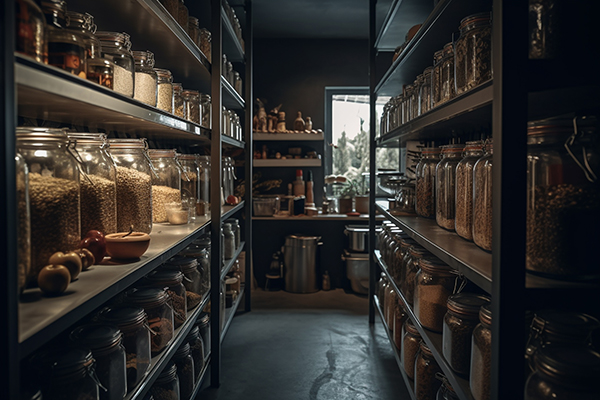
As a prepper, it can be easy to forget that it's important to keep your stockpile organized. If this is one of your problems while juggling different prepping projects, you can organize your supplies by creating an effective inventory system.
Keeping an organized stockpile ensures that you know where things are when you need them, which means you can save time looking for supplies that you need during emergencies. (h/t to ValleyFoodStorage.com)
Must-haves for an organized prepper stockpile
A basic prepper pantry should have an assortment of food supplies such as beans, grains, canned or freeze-dried fruits and vegetables and herbs and spices. Look for food with a long shelf life and buy items that your family won't mind eating a lot of during emergencies.
Here are some of the recommended categories of things in your pantry besides food:
Water
Aside from a variety of nutritious food, water is a must-have for your prepper pantry because you may face certain emergencies where your municipal water source becomes unsafe or unreliable, or your well dries up.
If possible, invest in stackable and sturdy water containers for your prepper pantry. You should also look into resources to collect, filter and treat water.
Another option is to set up a rainwater collection system on your homestead to harvest water. Other alternatives include having different methods for treating water, like boiling, iodine tablets and UV water filters. (Related: Budget-friendly tips to up your prepper game.)
Clothing
The right kind of clothing can help you stay warm in cold weather. This means that you should also have clothing prepped in your prepper pantry for quick evacuations.
If you think you may need to bug out, you should also have spare clothing packed for each family member's bug-out bag.
Always consider the time of the year and the different seasons when packing your clothing into bug-out bags. If it is cold outside, pack proper clothing that will help you stay warm and dry.
Medical supplies
When disaster strikes and someone becomes sick or injured, you may not have access to the nearest hospital or emergency medical services. Having a cache of medical supplies could be the difference between common ailments and injuries developing into something worse in a survival scenario.
Aside from first aid kits, you also have a supply of essential prescriptions and other over-the-counter medications. If you have babies or pets, include medications or supplements that they may need to stay healthy.
Emergency supplies and tools
Besides food and water, you will also need other supplies during emergencies. There may also be tools you want to have access to in case something breaks and you need to fix it.
Before SHTF, prepare these emergency supplies and tools:
- Fire extinguisher
- Flashlights and lanterns
- Spare batteries (for flashlights and small tools)
- A survival radio
- Various power tools (such as a drill, hammers, a saw, etc.)
- Screwdriver and wrench set
Survival gear
Things can happen very fast during emergencies. If you need to bug out and you don't have a bug-out location in mind, you will need to set up shelter outdoors.
Here are some essential survival items to keep in your prepper pantry:
- Camp stove and extra fuel
- Firestarting items/kit
- Fishing and hunting gear
- Tent and tarp
- Water filter
Tips for organizing your pantry and stockpile
Prepper pantries should be checked regularly so you can restock items that are running out or use up supplies before their expiry date. Keep your supplies organized and keep your food rations and supplies up to date.
Here is a list of ideas that can help you organize your prepper pantry:
Store similar items together
Having specific locations for similar items and using the same labels helps keep your pantry organized.
As you add more items to your pantry, keep similar items together so you can locate supplies easily if you are in a hurry.
First in, first out
When you restock your pantry, place recently purchased items behind the older items. This ensures that you use up the older items first and avoid dealing with expired foods or products.
Store the most used items at eye or hand level
Frequently used items such as food should be accessible.
On the other hand, you can keep things that hardly get used in less convenient areas.
Use sturdy but removable labels
In an emergency, you need to be able to quickly and clearly see where all items are located.
Use clear, visible labels to stay organized.
Store heavier items on the bottom
Keeping heavier items on the bottom of shelves reduces the risk of heavy objects falling. This also makes it easier to lift or move heavy items.
Having at least one year’s supply of food, water and other essential survival items is crucial, but you need to keep your items organized so you don't waste time looking for what you need when you need it.
Where to purchase lab-verified supplies for your stockpile
The Health Ranger Store is committed to helping you prepare for any emergency.
That's why we’re proud to introduce items such as Mini-Bucket Organic Almonds, Freeze-Dried Organic Banana and Fair Trade Organic Freeze-Dried Instant Coffee.
Considered one of the world’s most popular raw nuts, organic almonds are healthy snacks full of healthy fats, antioxidants, vitamins and minerals.
Health Ranger Select Organic Raw, Unpasteurized, Non-Irradiated Almonds are exactly how almonds should be, complete with a wholesome flavor and a wealth of nutrients that have earned these nuts their title as a superfood. Our premium almonds contain no sugar, chemical flavoring, hydrogenated oils, or added sodium and are not treated with preservatives.
Our Mini-Bucket Organic Almonds are imported from trusted vendors in Italy and are not fumigated with PPO. They are raw, unpasteurized and non-irradiated. They are vegan, non-China, non-GMO and are certified organic and Kosher.
They are also meticulously lab-tested for heavy metals, microbiology and glyphosate to ensure that you get only the cleanest, high-quality almonds from clean sources.
Known for their tasty flavor, natural sweetness, and rich nutrient content, bananas are the edible fruits that grow on the Musa spp. tree. However, like most other fruits, bananas don't stay fresh for very long.
To extend the shelf life of fresh bananas, they can be carefully freeze-dried to retain maximum nutrition.
Loaded with potassium, vitamin C and a variety of important nutrients, Health Ranger Select Freeze-Dried Organic Diced Bananas allow you to savor the delicious flavor and nutritional benefits of fresh bananas all year round.
Sourced from premium banana plants grown by our trusted suppliers under strict organic standards, these diced bananas undergo a careful freeze-drying process that preserves the original taste, texture and nutrients of our premium bananas.
Lastly, you should stock up on freeze-dried instant coffee. This premium product is made of tiny granules of brewed coffee extract that have been carefully chilled until frozen at specific temperatures, broken down into small fragments and finally dried under vacuum conditions.
The tiny coffee granules left behind by this process can then easily be rehydrated by adding water. This makes instant coffee the best way to store coffee and continue to get your coffee fix during an SHTF scenario.
The Health Ranger Store is thrilled to bring you our specialty Fair Trade coffee in a convenient and easy-to-prepare format. With a much longer shelf life than regular coffee, Health Ranger Select Organic Freeze-Dried Instant Coffee delivers a bold and exquisite flavor of medium roast coffee that you can enjoy immediately. Just add hot water, stir and your instant coffee is ready to drink.
Visit Health Ranger Store and Brighteon Store to find more high-quality supplies for your prepping needs. You can also go to FoodSupply.news for tips on how to build an organized food stockpile before SHTF.
Click on this link and try a recipe for a Toasty Coconut Protein Latte. Watch the video below for a video of this recipe.
This video is from the Health Ranger Store channel on Brighteon.com.
More related stories:
Debunking the TOP 5 MYTHS about emergency food storage.
Top canned foods with the longest shelf life.
Top 6 types of preppers: Learn more about them before SHTF.
Essential skills for urban prepping: How to prepare for emergencies in a city environment.
Sources include:
ValleyFoodStorage.com
HealthRangerStore.com 1
HealthRangerStore.com 2
HealthRangerStore.com 3
HealthRangerStore.com 4
HealthRangerStore.com 5
Brighteon.com
Creating an effective inventory system for your prepper supplies – NaturalNews.com
If you're gonna fight, fight like you're the third monkey on the ramp to Noah's Ark... and brother its starting to rain. Join our efforts to Secure America's Borders and End Illegal Immigration by Joining ALIPAC's E-Mail Alerts network (CLICK HERE)
-
09-12-2024, 11:33 AM #9225If you're gonna fight, fight like you're the third monkey on the ramp to Noah's Ark... and brother its starting to rain. Join our efforts to Secure America's Borders and End Illegal Immigration by Joining ALIPAC's E-Mail Alerts network (CLICK HERE)
-
09-12-2024, 11:40 AM #9226

THE GARDENING SECRET THEY DON'T WANT YOU TO KNOW ABOUT - GROW MASSIVE PLANTS !!
THE GARDENING SECRET THEY DON'T WANT YOU TO KNOW ABOUT - GROW MASSIVE PLANTS !!


99Percent
17.4K Subscribers
If you're gonna fight, fight like you're the third monkey on the ramp to Noah's Ark... and brother its starting to rain. Join our efforts to Secure America's Borders and End Illegal Immigration by Joining ALIPAC's E-Mail Alerts network (CLICK HERE)
-
09-12-2024, 11:49 AM #9227

Flush unwanted toxins with detox foot pads
FLUSH UNWANTED TOXINS WITH DETOX FOOT PADS

 NaturalNews
NaturalNews
NaturalNews
47.7K subscribersIf you're gonna fight, fight like you're the third monkey on the ramp to Noah's Ark... and brother its starting to rain. Join our efforts to Secure America's Borders and End Illegal Immigration by Joining ALIPAC's E-Mail Alerts network (CLICK HERE)
-
09-12-2024, 10:04 PM #9228
Oral health: 10 Natural remedies for dental plaque and gingivitis
Thursday, January 05, 2023 by: Olivia Cook
Tags: alternative medicine, Bad Breath, dental caries, dental hygiene, food cures, food is medicine, gingivitis, goodhealth, Green tea, gum health, herbal medicine, Herbs, Holistic Dentistry, mouthwash, natural antibiotics, natural cures, natural medicine, oral health, periodontal disease, plaque periodontitis, probiotics, tooth decay, turmeric
11.9KVIEWS

(Natural News) Here are 10 science-backed natural remedies for microbial plaque, which is known as the most important causative agent for periodontal disease – an inclusive term for the inflammatory condition of gingiva (gingivitis) and/or periodontium (periodontitis).
Aloe vera
A study published in the journal Oral Health and Dental Management showed that aloe vera mouth rinse is equally effective in reducing periodontal indices as chlorhexidine, an antiseptic and disinfectant used to help reduce the number of germs (bacteria) in your mouth.
Results after mouth rinsing twice a day for 30 days demonstrated a significant reduction of gingival bleeding and plaque indices in 115 test subjects using mouthwash containing aloe vera and the 115-control group using chlorhexidine.
Asafetida
Results of a study published in the European Journal of Integrative Medicine demonstrated the efficacy of asafetida (a key ingredient in Indian cuisine) for improving the indices of gingival health, such as gingival color (redness), contour and spontaneous bleeding. (Related: Natural mouthwashes clean your mouth just as well as chemical ones WITHOUT the side effects.)
Clove
A study published in the Indian Journal of Pharmaceutical and Biological Research indicated that eugenol has germicidal properties that make clove oil very effective for relieving dental pain, toothache, sore gums and mouth ulcers.
In addition, gargles with diluted clove oil help in easing the throat and its characteristic smell helps remove bad breath.
Garlic
A study published in the Journal of Medicinal Food revealed that allicin, the active ingredient in garlic, inhibited the growth of oral pathogens associated with dental caries and periodontitis, such as Streptococcus mutans, Porphyromonas gingivalis, Actinobacillus, Actinomycetemcomitans and Tannerella forsythia. (Related: A list of effective natural treatments for gingivitis.)
 Green tea
Green tea
A study published in the Journal of Indian Society of Periodontology suggested that green tea, with its health-promoting flavonoids, including catechins and their derivatives, promotes periodontal health by reducing inflammation, preventing bone resorption and limiting the growth of certain bacteria associated with periodontal diseases. (Related: Eat your way to good oral hygiene with an anti-inflammatory plant-based diet.)
Guava
A study published in the journal Pharmacognosy Review pointed to the common guava as one of the plants used in Ayurveda in the form of mouthwashes and toothpaste to control plaque, which causes gingivitis.
Guava leaves contain two important flavonoids – quercetin (known for its spasmolytic, antioxidant, anti-microbial and anti-inflammatory actions) and guaijaverin (known for its anti-bacterial action. The fruit pulp contains ascorbic acid, which is essential in preserving periodontal health, according to a study published in the Journal of the Canadian Dental Association.
Pomegranate
A study published in the Journal of Indian Society of Periodontology referred to pomegranate as “Nature’s power fruit,” because it possesses “a vast ethnomedical history and potent antibacterial, antiviral, antioxidant and anti-inflammatory properties for the treatment of periodontal disease.”
Researchers indicated that the antibacterial quantities in pomegranates lower the chances of developing tooth decay and gum disease by preventing plaque.
Probiotics
A randomized controlled study published in the journal Contemporary Clinical Dentistry instructed school children aged 12 to 15 in Jaipur, Northern India, to mix commercially available freeze-dried probiotics powder in 30 milliliters of water and swish once daily for three minutes for three weeks.
Using the Turesky-Gilmore-Glickman plaque index, results showed that the use of the probiotic mouth rinse improved oral health in children by significantly reducing plaque and gingival scores.
Sage
A study published in the Iranian Journal of Microbiology demonstrated the antibacterial effect of sage extract mouthwash against Streptococcus mutans, which is the primary pathogen responsible for initiating dental caries and decay.
Scientists explained that the presence of sucrose stimulates S. mutans to produce insoluble glucans and form an oral biofilm, also known as dental plaque, to initiate caries lesions.
Turmeric
A study published in the National Journal of Maxillofacial Surgery indicated that turmeric gel can be effectively used in the prevention of plaque control and gingivitis – pointing to turmeric’s most active constituent curcumin, which has been touted for its antioxidant, anti-inflammatory, antiviral, antibacterial antifungal, antiseptic and analgesic properties.
Visit HolisticDentistry.news to learn more about how to support oral health naturally.
Watch the following video to learn about the natural treatment for gingivitis.
This video is from the Holistic Herbalist channel on Brighteon.com.
More related stories:
Prepper tips: 10 ways to maintain oral hygiene in the wilderness.
Antioxidants and probiotics for better oral health: Natural remedies for gingivitis.
Build a survival dental kit to maintain dental hygiene even when SHTF.
Sources:
PubMed. NCBI.NLM.NIH.gov 1
ScienceDirect.com
SemanticScholar.org
LiebertPub.com
LWW.com
PhCogRev.com
PubMed.NCBI.NLM.Nih.gov
NCBI.NLM.NIH.gov
DentistryToday.com
ContempClinDent.org
ResearchGate.net
NJMS.in
Brighteon.com
Oral health: 10 Natural remedies for dental plaque and gingivitis – NaturalNews.comLast edited by Airbornesapper07; 09-12-2024 at 10:29 PM.
If you're gonna fight, fight like you're the third monkey on the ramp to Noah's Ark... and brother its starting to rain. Join our efforts to Secure America's Borders and End Illegal Immigration by Joining ALIPAC's E-Mail Alerts network (CLICK HERE)
-
09-12-2024, 10:59 PM #9229
Traditional Cooking for the Modern Pioneer
Bone Broth • Ferments • Sourdough • and More!HOME NATURAL REMEDIES
How to Make a Natural Antibiotic Ointment
MARY BRYANT SHRADER
Posted July 29, 2023
Learn how to make this natural antibiotic ointment to soothe bug bites, minor cuts, and more! You can easily make this ointment with only five ingredients, and it can be ready in minutes.

Watch the Natural Antibiotic Ointment Herbal Salve video
Affiliates note: As an Amazon Associate I earn from qualifying purchases. My content may contain affiliate links to products and services. If you click through and make a purchase, I’ll receive a small commission. It does not affect the price you pay.
Table of Contents
- What is a Natural Antibiotic Ointment?
- Disclaimer
- Ingredients for Making a Natural Antibiotic Ointment
+ VIEW MORE
What is a Natural Antibiotic Ointment?
A natural antibiotic ointment is a soothing herbal balm or herbal salve that you apply externally. The ingredients in the ointment work to combat harmful microbes that can otherwise lead to infection.
For the natural antibiotic ointment you’re making with this recipe, the coconut oil serves as a broad spectrum anti-microbial along with the essential oils helichrysum and German chamomile.
The helichrysum essential oil and the other ingredients in this healing ointment also offer a whole host of benefits to help with skin inflammation, including these properties:
- Analgesic (pain relief)
- Anti-bacterial
- Anti-inflammatory
- Antiseptic
- Scar diminishing
- Skin regeneration
Read more about the benefits of the ointment’s ingredients in these research papers:
Subscribe to Mary's Nest!
Subscribe to my free newsletter and receive a copy of my free 36-page Pantry List and bonus eBooks too!
I consent to receiving emails and personalized ads.
- Helichrysum italicum: From Extraction, Distillation, and Encapsulation Techniques to Beneficial Health Effects
- A Comprehensive Study of Therapeutic Applications of Chamomile
Disclaimer
I am not a doctor or medical professional. If you are not feeling well, please seek professional medical attention and medicine. And if you are thinking of supplementing your treatment with home remedies, be sure to talk to your medical professional about them. It’s important that you get the medicine and treatments you need to get back to good health.
Ingredients for Making a Natural Antibiotic Ointment
Find the full printable recipe with measurements below.

You only need 5 ingredients needed to make this natural antibiotic ointment:
- Beeswax – Provides soothing properties and makes for a smooth spreadable ointment.
- Coconut oil – Introduces a strong anti-microbial.
- Jojoba Oil – Helps to reduce scaring and acts as a natural preservative.
- German “Blue” Chamomile Essential Oil – Includes anti-microbial, anti-bacterial, anti-inflammatory, and analgesic properties.
- Helichrysum (italicum) Essential Oil – Includes anti-microbial, anti-inflammatory, antiseptic, and analgesic properties and helps diminish scarring and increase skin regeneration.
Get links to ingredients and supplies to make this antibiotic ointment.
How to Make a Natural Antibiotic Ointment
Find the full printable recipe with instructions below.

Making a natural antibiotic ointment is easy, and it can be ready in minutes.
- Place beeswax and coconut oil in a double boiler and melt over a very low heat.
- Turn off the heat, add in the jojoba oil, and stir well.
- Move the top of the double boiler (or bowl) to a heatproof surface. Allow to cool to a warm but no longer hot temperature. (Not shown in image above)
- Once warm, add in the essential oils, and whisk well to incorporate.
- Transfer to a glass jar with a lid to store.
Variations
Although jojoba oil is my first choice to use when making this antibiotic ointment, if you do not have any on hand, you can substitute this ingredient with extra-virgin olive oil.
Preparation Tips

This antibiotic ointment is best made in a double-boiler or similar setup. However, if you do not have the equipment needed to prepare this recipe in a double boiler, you can also use a small saucepan.
Be sure to watch the beeswax pellets and coconut oil carefully as they are melting, as you do not want to allow the mixture to boil at any time.
How to Store a Natural Antibiotic Ointment

This Natural Antibiotic Ointment is best stored in a glass jar with a tight lid in a cool dark place. A kitchen pantry is perfect, or wherever you have set up your Herbal Medicine Cabinet within your Healing Pantry.
How to Use a Natural Antibiotic Ointment
You can apply this Natural Antibiotic Ointment to bug bites, minor cuts, scrapes, or abrasions, but first, be sure to wash the affected area well with warm soapy water, rinse well, and allow the skin to air dry. Once the skin is dry, gently apply the ointment.
Continue to apply the ointment for the first few days as the skin heals. If a scar remains once the skin has healed, continue to apply the ointment daily, rubbing it in well to help diminish the scar.
You can also apply this ointment to an old scar to help diminish it, as well as apply it to help soothe dry, cracked skin, such as on heels and elbows, and jagged and inflamed cuticles.
Master Recipes for Natural Remedies
Master recipes show you how to create a recipe but give you the flexibility to switch out the ingredients. Try the following master recipes and customize them to create the natural remedy that will help your needs.
- Medicinal Herbal Poultice using Fresh Herbs or Dried Herbs
- Medicinal Herbal Oils and Herbal Salves
- Medicinal Herbal Tinctures Using Any Herb
How to Make a Natural Antibiotic Ointment - Mary's Nest (marysnest.com)If you're gonna fight, fight like you're the third monkey on the ramp to Noah's Ark... and brother its starting to rain. Join our efforts to Secure America's Borders and End Illegal Immigration by Joining ALIPAC's E-Mail Alerts network (CLICK HERE)
-
09-12-2024, 11:00 PM #9230
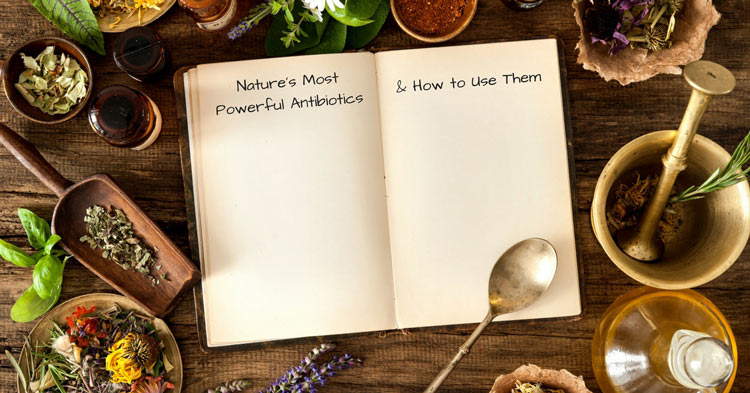
The Top 7 Most Effective Natural Antibiotics and How to Use Them
Cameron Hooper May 4, 2017
Remedies
Deprecated: The PSR-0 `Requests_...` class names in the Requests library are deprecated. Switch to the PSR-4 `
Ever since drug-based antibiotics came around in the 1940s, natural antibiotics have taken the back seat.
Well… until recently that is. Now that we’ve come to realize drug-based antibiotics have some nasty side effects, the demand for natural antibiotics has exploded.
Every time you swallow a drug-based antibiotic, you cause significant harm to your digestive system by destroying the healthy bacteria in your gut.
This can result in
- A weakened immune system
- Gut-related diseases (such as Crohn’s)
- Food sensitivities
- Nutrient deficiencies
- Chronic Inflammation
And it’s not like drug-based antibiotics damage the gut for a just few weeks.
The Journal Microbiology, claims that even a short course of antibiotics can cause undesirable changes in the gut microbiome that persist for up to 4 or more years! (1)
That being said, here’s an overview of the natural antibiotics I mention in this article. If you don’t feel like reading too much, just click on the natural antibiotic that interests you the most to jump to it.
Natural Antibiotic What It’s Best For Manuka Honey Skin or oral infections, immune system boost Oregano Oil Skin & sinus infections, foot & nail fungus Garlic Colds, flu, ear infections, immune system boost Cinnamon Fungal infections (candida, athlete’s foot), immune system boost Fermented Foods Significantly improves immune system and gut health Ginger Prevent foodborone illness, best when combined with other remedies Pau D’ Arco Candida in the gut, viral & bacterial infections
Popping Antibiotics Like Candy
As you could imagine, the damage to your body increases with the amount of antibiotics you take.
Which is a huge concern since prescription antibiotics have become one of the most over-prescribed “medicines” today.
And there’s no sign it’s slowing down.
In fact, data from the CDC indicates that…“1 of every 3 patients are given antibiotics when they aren’t even needed.”This behavior is the main reason why antibiotic-resistant bacteria, or “superbugs,” have developed. And scientists can’t figure out how to fight them.
The bottom line is that drug-based antibiotics are causing a significant amount of harm. And their overuse is only making things worse.
Drug-based antibiotics should only be used as a last resort.
Most natural antibiotics, on the other hand, don’t cause harm to your digestive system (with a few exceptions). And they certainly aren’t over-prescribed.
So if you want to fight infection without destroying your health at the same time, here are the top 7 most powerful antibiotics backed by science.
1. Manuka Honey

Manuka honey is one of the most unique and beneficial forms of honey on the planet— it’s like honey on steroids.
Among its many other health benefits, manuka honey has a powerful infection-fighting punch.
Unlike normal raw honey, manuka honey is made from bees that pollinate the Manuka bush.
The result is a honey rich in naturally occurring hydrogen peroxide, methylglyoxal, and dihydroxyacetone. This trifecta of substances is responsible for the potent antimicrobial properties of Manuka honey (2).
Studies have even found that manuka honey can kill off staph infections (MRSA), an antibiotic-resistant superbug. Most drug-based antibiotics, on the other hand, are completely useless for treating MRSA.
How to use Manuka Honey
Primary Uses: Skin or oral infections (e.g., helps fight bacteria that causes plaque), general immune booster.
Manuka honey is primarily used topically (on the skin).
But since it’s honey, you can also eat it to give your immune system a boost. It’s the most delicious way to fight infection.
- Skin Infections: Take a small dab and lather the honey on the infected area. Cover with gauze or a band aid.
- Internal Immune Boost: If you notice people around you are getting sick or you recently caught a cold, you can take a tsp 1-2 times per day. This can help prevent you from getting sick in the first place or reduce the duration of your illness. I like to combine manuka honey with ginger and cinnamon to make it even more powerful.
I just wouldn’t suggest eating it every day for long periods of time since it would get expensive. Manuka honey is more medicine than food. Treat it like something you would put in your medicine cabinet.
Where Do I Buy Manuka Honey?
Like any supplements out there, the range of quality is massive. And since it’s really expensive, you want it to work, right?
I really dug deep into the research to find a high quality and high potency manuka honey. This is the brand I finally decided to use:
Warnings: Avoid getting the cheaper manuka honey brands with lower UMF ratings. They will be a complete waste of money. Also, don’t use while immune compromised unless it’s medical-grade.
2. Oregano Oil

Oregano oil is nothing like the herb you would put in your pasta sauce.
It’s a distilled extract of medicinal-grade oregano. Like manuka honey, it’s more of a medicine than a food.
Oregano oil contains two potent compounds called carvacrol and thymol. Both of which can fight off an impressive range of pathogens (harmful microbes).
Carvacrol, for example, is extensively studied for its antimicrobial effects. Over 1,000 studies have indicated that it can fight (3)
- Bacterial infections
- Fungal infections (like thrush which is caused by candida)
- Viruses
- Parasites
- Allergies
- Inflammation
The point is, oregano oil is one of the most powerful natural antibiotics on the planet.
Countless people have successfully treated foot / nail fungus, sinus infections, yeast infections, and even MRSA with oregano oil.
How Do I Use It?
Primary Uses: Skin infections, foot & nail fungus, sinus infections.
The way you use oregano oil will largely depend on what kind of infection you’re dealing with.
- Foot or nail fungus: Put a few teaspoons of oregano oil in a tub of water and soak your feet in it. You can also dilute the oil by combining a drop of oregano oil with a teaspoon of coconut or cold-pressed olive oil. From here you can apply it to your nails or skin.
- Sinus Infections: Put a few drops of oil into a big pot of steaming water and inhale the steam (be careful it’s not too hot). Alternatively, you can use a neti pot (just use one small drop) which works great when you’re too stuffy to breathe in steam.
- Oral infections (like thrush): Dilute a drop of oregano oil with a teaspoon of cold-pressed coconut oil. Swish for a few minutes and rinse it out. Repeat 3-4 times a day.
Where Do I Get it?
Due to possible pesticide contamination, I always suggest going organic.
It’s also important to use the right oregano species. There are over 40 different species of oregano, and not all of them will have the medicinal effect you’re looking for.
The two most effective species are Origanum vulgare and Thymus capitatus. So the supplement should contain one of these species to get the best results.
That being said, here’s the best organic oregano oil brand I could find:
Warnings: Don’t use internally. It’s really powerful stuff so it can actually kill off some beneficial bacteria in your gut.
3. Garlic (extract)

Garlic isn’t just a delicious vegetable to add to your meals. It’s also a powerful antibiotic that’s been used for thousands of years by cultures around the world.
And it turns out, these cultures were spot on for using garlic as an antibiotic.
One study, for example, found that an active substance in garlic (diallyl sulphide) is up to 100x more effective than antibiotics (4).
Pretty amazing, right?
Garlic is known to fight a wide range of infections including bacteria, viruses, fungi, and even parasites (5).
But garlic doesn’t just kill infectious microbes. It also bolsters your immune system.
Studies have found that eating garlic on a daily basis can reduce the number of colds a person gets by 63% and reduce the duration of cold symptoms by up to 70% (6).
And unlike drug-based antibiotics, garlic provides a long list of additional health benefits including its ability to
- Lower blood pressure
- Improve cholesterol levels
- Prevent Alzheimer’s disease with antioxidants (7)
- Boost athletic performance
- Sulfur compounds bind to heavy metals (like lead or mercury) so they can be excreted from the body
But if you want to use garlic as an antibiotic, there’s a big catch…
How to Use It
Primary Uses: Internal, general colds, flu, ear infections, immune system booster
Cooking your garlic to add a flavor bomb to your food is perfectly fine. But if you want to use it medicinally, it needs to be raw.
That’s because when you cook or dry garlic, you destroy the ingredients that are responsible for its antibiotic effects.
To get all the antibiotic goodness from garlic, this is what I do…
- For Skin Infections: Combine 1 tbsp. cold-pressed olive oil with 1 clove of crushed garlic. Place the garlic in the oil and let it sit for 30 minutes, then strain. Set in a cup that’s sitting in warm (NOT hot) water if you want it warmed. Place a few drops of the oil on the infected area. Alternatively you can dilute one drop of garlic essential oil in the tbsp. of coconut / olive oil.
- For Ear Infections: According to Dr. Natasha Campbell-McBride MD, you can use the above garlic-infused oil to treat ear infections. Take the oil, slightly warm it and put a few drops in the affected ear(s) hourly. This will also help loosen up ear wax buildup.
- To Boost The Immune System: Crush 1 clove of raw garlic. Crushing is better than chewing so your breath won’t be as bad and you won’t lose any friends with your rancid breath in the process ?. Swallow the garlic and you’re all set. Consume once per day.
Where Do I Get it?
It’s very important to make sure your garlic is from a safe source.
When selecting garlic at the store, I ensure it’s organic and that it’s not from China (they have very poor regulations).
I use the same guidelines when selecting a garlic oil to use. If you don’t want to shop around, this is what I use:
4. Cinnamon

Cinnamon is one of the world’s oldest and most common spices (8).
But cinnamon isn’t just any ordinary spice as you may have guessed.
Science has shown that cinnamon can fight off a wide range of dangerous bacterial and fungal infections (10).
For example, one study found that cinnamon inhibits the growth and mycotoxin production of certain fungi (11).
This is just a highbrow way of saying, cinnamon kills off fungal infections and stops it from making compounds that cause disease or tissue damage.
Cinnamon is also well known for its countless medicinal benefits including its ability to treat
- Acne caused by bacteria (9)
- Oral infections & bad breath
- Gut discomfort
- Hemorrhaging
There’s really nothing bad to say about cinnamon. It’s delicious AND loaded with health benefits.
How to Use It
Primary Uses: Internal immune booster with powder, external with oil (namely fungal infections like candida or athlete’s foot), best used in combination with other natural antibiotics.
The way I use cinnamon to treat infections largely depends on where the infection is.
- Skin-based infections: I use few drops of a high-quality ceylon cinnamon oil. I combine it with manuka honey and lather it on the infected area. This works really great because it’s a “wombo combo” of two different natural antibiotics.
- Internal infections: For things like the cold or flu, I combine a high quality organic Ceylon cinnamon powder with manuka honey or regular raw organic honey. I use this combo twice a day when I notice people getting the cold or flu. This usually helps prevent me from getting sick. Or at the very least, it significantly decreases the length of my colds.
Where Do I Get it?
Whether you’re using cinnamon as a spice or medicine, you need to make sure it’s organic Ceylon cinnamon.
The most common form of cinnamon you find in stores (Cassia) has high levels of coumarin, which is a toxin that can cause liver damage for certain people (12).
So if you can’t find a quality source of organic Ceylon cinnamon locally, I would suggest finding a source online such as this one:
5. Fermented Foods

I know…I know…fermented foods don’t directly have antibiotic effects.
But fermented foods are extremely important for a strong immune system (among many other things).
You see, fermented foods like sauerkraut or kombucha contain healthy bacteria. So when we eat fermented food, it boosts and preserves the beneficial bacteria in our gut—this is called our gut flora.
Our gut flora is destroyed by the pesticides in our food, antibiotics, alcohol, and NSAID drugs like Aspirin.
That’s why our gut needs to get an extra dose of healthy bacteria to stay healthy and function properly. But how does this relate to our immune system?
It’s estimated that up to 70% of our immune system is found in the gut. So when our gut flora is imbalanced (and believe me it is for most of us), our immune system becomes weak.
As a result, we get sick much easier and we’re more prone to autoimmune diseases like psoriasis.
Not only does it make sense, scientific studies have also validated the importance of fermented foods.
A scientific review by the American Journal of Clinical Nutrition, for example, explored the evidence of how bacteria in the gut is essential for a strong immune system (13). They went on to explain“Probiotic bacteria are shown to promote the endogenous host defense mechanisms…[and] stimulate nonspecific host resistance to microbial pathogens.”This is just a nerdy way of saying, healthy bacteria can improve your body’s ability to fight off infection. And fermented foods are, hands-down, the best source of healthy bacteria you can get.
How to Use
Primary Uses: Supports a healthy immune system
This one is pretty straight forward.
Just aim to consume 2-3 different fermented foods every day to give your immune system a significant boost.
Some of the most popular fermented foods include
- Kombucha (a great substitute for soda)
- Sauerkraut & Kimchi
- Kefir (I like coconut water kefir)
- Fermented grains (like real sour dough)
You can make it yourself using lacto-fermentation. It’s a relatively simple process that takes 4-7 days. You can ferment basically anything. And it’s surprisingly tasty!
Where to Get it
You can buy fermented food in most grocery stores now. When I don’t have time to make it myself, I will usually buy kombucha, kimchi, or sauerkraut at the store.
If you can’t get ahold of or don’t have time to make fermented foods, the next best option is taking a high quality probiotic supplement.
Probiotics aren’t as ideal because they don’t provide a broad spectrum of healthy bacteria like fermented foods do. Because that’s what your gut needs.
To get the best of both worlds, I eat fermented foods AND take a probiotic as a form of insurance.
But not all probiotics out there are beneficial. And to be honest, most of them out there are crap. In the past, I spent a lot of time sifting through the different brands. One of the best probiotic brands I could find is called Primal Defense, by Garden of Life. It can be found here:
6. Ginger

Ginger is another promising natural antibiotic.
That’s because ginger contains natural compounds that can
- Fight infections
- Soothe digestive issues & discomfort
- Relieve nausea
- Reduce inflammation
- Increases stomach acid to calm digestion after a meal (14)
These properties are the reason why raw ginger is always served with raw foods like sushi. It helps prevent foodborne illness.
Like garlic, ginger should be raw if you want to get the antibiotic effects from it.
But it’s not known if ginger is as effective compared to the other natural antibiotics I mentioned because it hasn’t been well studied.
In other words, we know ginger is an effective antibiotic, we just don’t know how effective it is against a broad spectrum of pathogens.
How to Use It
Primary Uses: Used in combination with other natural antibiotics to increase effectiveness, general immune & health booster.
Since there aren’t many studies on ginger, I prefer to use ginger in combination with other antibiotics to get better results.
For example, I will use raw honey with raw ginger and cinnamon to fight the flu. The added ginger really helps since it can alleviate nausea that comes with the flu.
Plus, raw ginger is rugged if you try to eat it by itself. So I like to combine it with other things to make it taste better.
Ginger is for internal use only. I don’t suggest using ginger extracts or anything like that on the skin because it can cause irritation.
Where to Get it
This one is also straightforward. Get organic ginger at the store.
From here you can freeze any excess ginger you have. When you’re feeling run down, just grate it using a metal grater. Then you can add the raw ginger to your salad dressings, Asian-inspired dishes, or anything else you think it may be good in. But remember, it should be raw or only very briefly cooked.
Alternatively, you can get the antibiotic benefits of ginger with ginger extract pills (I suggest this one) or ginger candy.
7. Pau d’ Arco
Pau d’ Arco is a medicinal tree bark from the rain forest of South America.
It’s thought to help with a wide range of health complications such as
- Chronic inflammation
- Pain
- Fevers
- Candida overgrowth
- Ulcers
And of course, some evidence suggests Pau d’ Arco is effective at fighting viral, fungal, and bacterial infections.
Scientists believe a compound called beta-lapachone is responsible for Pau d’ Arco’s antimicrobial effects.
Evidence suggests beta-lapachone prevents viruses from replicating and it kills bacteria by inhibiting cellular respiration (15)(16).
Pau d’ Arco is also thought to be one of the best herbs to fight against candida overgrowths in the gut. Some even claim that Pau d’ Arco can reduce sugar cravings by fighting the candida overgrowth.
While Pau d’ Arco has compounds that may help with infections, there ultimately needs to be more studies to be sure.
How to Use It
Primary Uses: Fight fungal infections like candida in the gut.
Pau d’ Arco can be used externally with a tincture or internally with tablets.
Some people don’t tolerate it well, and get nauseous with larger doses. If you’re one of these people, just keep it for skin or oral infections (you can just spit it out).
People also seem to have a lot of success with using Pau d’ Arco for oral candida (thrush), skin conditions, and sore throats.
It’s NOT recommended for children, infants, and it can negatively interact with blood thinner medications.
As always, consult a healthcare practitioner before trying any of these natural alternatives.
Where To Get It
According to the University of Maryland Medical Center, you can get Pau d’ Arco in tablet, tea, or tincture form (14).
But it’s best to stay away from the teas since the chemicals that give Pau d’ Arco its medicinal effects don’t dissolve in water. In other words, Pau d’ Arco tea is a waste of your money.
So you’re left with a tincture or tablets. With these, you can just follow the instructions on the packaging.
I did some research, and the brand as seen below seems to have the best product out there. It’s not perfect, but it’s the best option for a tincture I could find.
Replenish Your Good Bacteria No Matter What
Sometimes even natural antibiotics can kill off beneficial bacteria (particularly the stronger ones).
And since there’s so many things we’re exposed to every day that kills off our gut flora, it’s important to constantly replenish the healthy bacteria.
This is best achieved through eating fermented foods at least 2-3 times per day. As a form of insurance, you can also take a high-quality probiotic.
Natural Antibiotics to Avoid
I created this list in a specific order. The first 1-3 natural antibiotics are the best, whereas the remedies lower in the list have the least amount of evidence supporting their effectiveness for fighting infections.
That being said, there are a lot of other natural antibiotics out there that should be downright avoided, despite their popularity.
Some of them simply aren’t effective, whereas others cause significantly more harm than they’re worth.
So here’s the list of natural antibiotics you should AVOID:
- Colloidal Silver: Before refrigerators were invented, silver was used in foods like milk to prevent bacterial growth. It was even used to prevent the spread of certain diseases. Sure it works, but it’s never a good idea to expose your body to heavy metals. That’s just asking for health issues. The only time it’s useful is when all other alternatives fail to work or for short-duration topical uses.
- Grapefruit Seed Extract: Again, this is another alternative that works considerably well, but there’s a big issue. Grapefruit Seed Extracts can contain harmful chemicals or additives like benzalkonium chloride and triclosan—synthetic preservatives. These preservatives are thought to be the real reason why Grapefruit Seed Extract has antibiotic effects.
- Standard Store-Bought Honey: There’s a serious lack of regulation on honey products that aren’t raw. This means a large percentage of “honey” on the shelves contains things like heavy metals, antibiotics, and filler sweeteners such as corn syrup. The point is, store-bought honey can cause damage to your health and it will not fight infections (15).
The Bottom Line
There’s no denying that drug-based antibiotics are tremendously over-prescribed.
This misuse of antibiotics has led to the development of antibiotic resistant bacteria and an unfathomable amount of damage to people’s gut.
While prescription antibiotics do have their place, it’s not always necessary to use them. Instead, it’s perfectly reasonable to use natural alternatives like manuka honey and garlic (oil).
Taking the natural approach will help prevent antibiotic resistant superbugs from developing. And most importantly, it will save your gut from a lot of unnecessary damage that can lead to serious disease down the road.
If you have tried natural antibiotics before, comment below to let me know what your favorite is! If you have anything to add to this list, that would be even better ?
The Top 7 Most Effective Natural Antibiotics and How to Use Them (naturalife.org)
If you're gonna fight, fight like you're the third monkey on the ramp to Noah's Ark... and brother its starting to rain. Join our efforts to Secure America's Borders and End Illegal Immigration by Joining ALIPAC's E-Mail Alerts network (CLICK HERE)


 226Likes
226Likes LinkBack URL
LinkBack URL About LinkBacks
About LinkBacks





 Reply With Quote
Reply With Quote



New York Post 270.4K Followers Supreme Court allows Trump admin...
10-03-2025, 09:46 PM in General Discussion